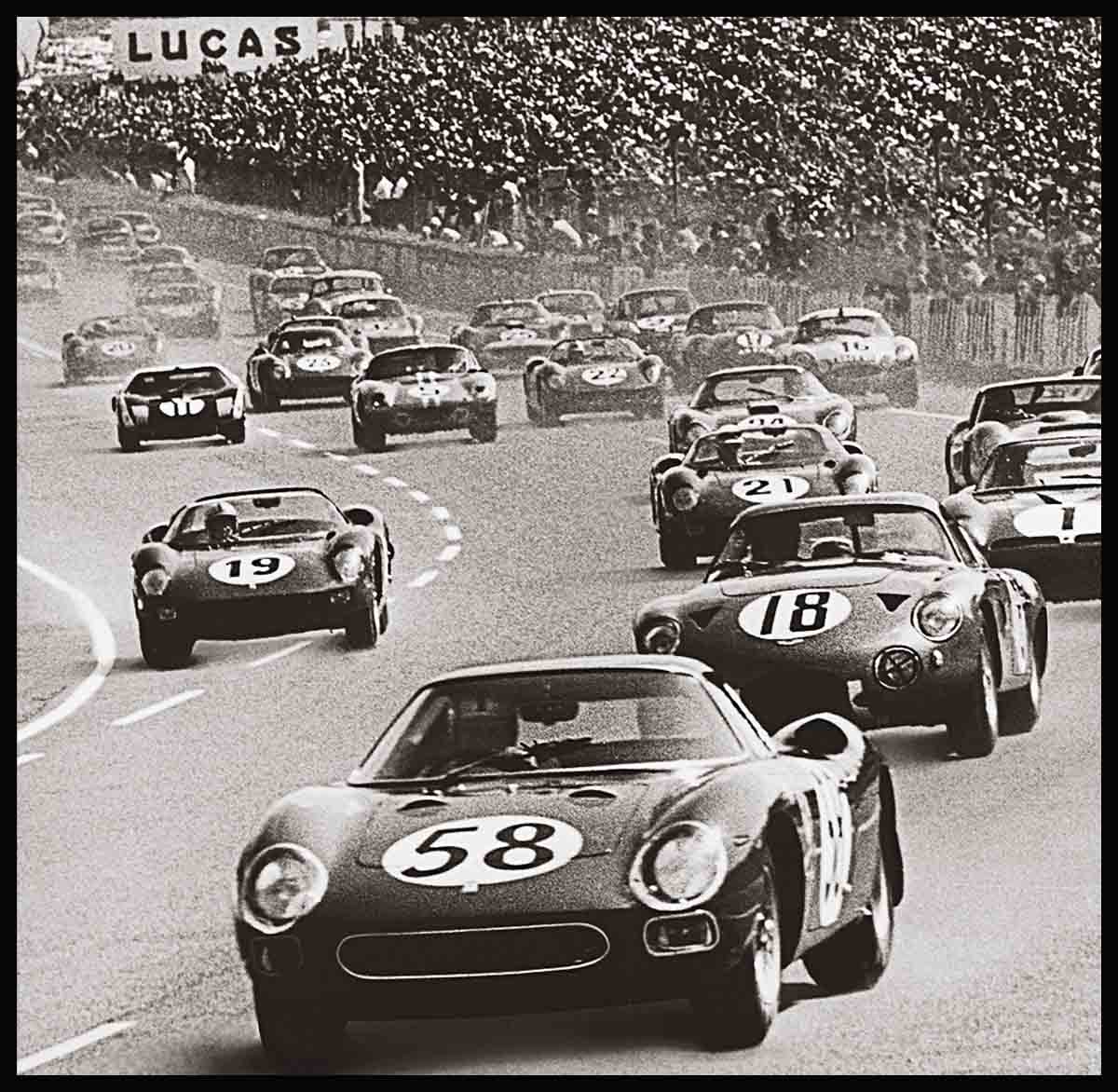
The Power Of Le Mans
Success at Le Mans in France virtually sealed a sports car’s status as a true classic. The 24-hour race was a feat of endurance, with cars and drivers under considerable stress. For a car even to complete the arduous, round-the-clock race it had to be tough, efficient, and perform in extreme conditions. Teams of drivers worked in shifts in order to cover the most miles, and were disqualified if they did not cross the finish line after 24 hours.

WINNING QUALITIES
The 1964 Le Mans 24-hour race was full of triumphs and disappointments. Leading the pack at the start was David Piper’s Ferrari 250 LM, followed by Mike Salmon in his Aston Martin DP214, as the cars headed for the first bend. Following a dispute with race organizers, however, the Ferrari was forced to run as a prototype, while the Aston was disqualified after 235 laps and almost 18 hours for an incorrect oil change. Ford established a lap record of 131 mph (211 km/h), but its attempt at glory with its new GT40 was plagued by reliability issues—it would be back, winning four consecutive times with its GT40 from 1966-69. The race was eventually won by Jean Guichet and Nino Vaccarella, driving a Ferrari 275P.
Cars mass at the start of the 1964 Le Mans 24-hours race, with a team’s qualifying time determining its position on the grid.
It is a quote. The Classic Car Book – The Definitive Visual History 2016





No Comments